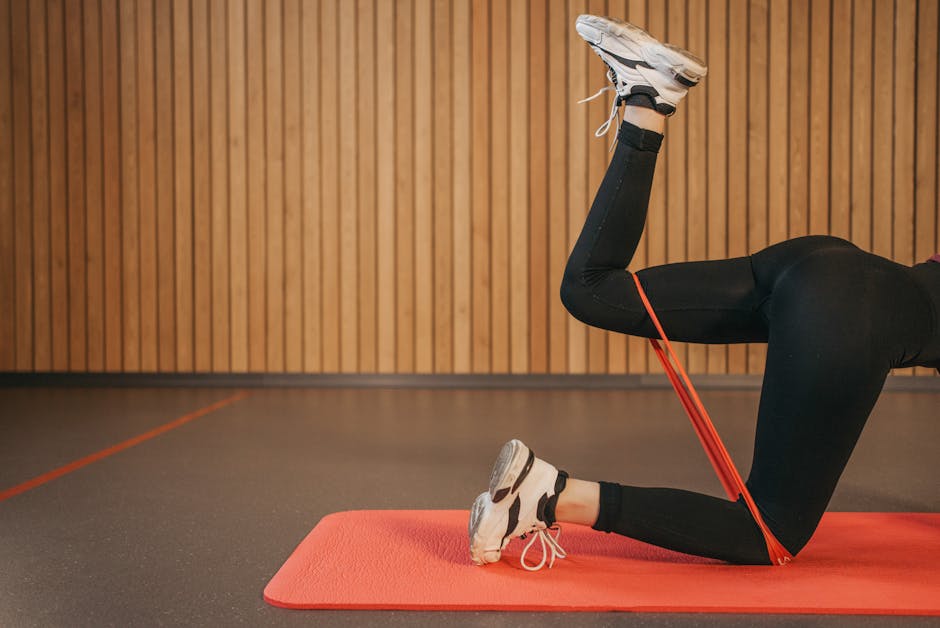The Best Warm-Up Techniques for Lifters
Are you ready to lift? Before you hit the weights, theres one crucial step you shouldn’t skip: warming up. A good warm-up can boost your performance and keep injuries at bay. So, how do you warm up effectively? Let’s dive into the best warm-up techniques for lifters.
Why Should You Warm Up?

Warming up prepares your body for the demands of lifting. It increases blood flow to your muscles, raises your heart rate, and enhances your range of motion. This means you’ll be more ready to tackle those heavy weights.
According to a study from the National Strength and Conditioning Association, a proper warm-up can improve strength performance by 20%. that’s a significant boost!
What Are Dynamic Warm-Ups?

Dynamic warm-ups involve movement. Unlike static stretches, which hold a position, dynamic warm-ups get your body moving. Think of it as a way to “wake up” your muscles.
Common dynamic warm-up exercises include:
- Leg swings
- Arm circles
- Walking lunges
- High knees
Start with gentle movements and gradually increase intensity. This gets your heart rate up and prepares your muscles for action.
How to Structure Your Warm-Up?

Creating an effective warm-up routine doesnt need to be complicated. Heres a simple structure you can follow:
- Start with light cardio: Spend 5-10 minutes on a treadmill, bike, or jump rope.
- Incorporate dynamic stretches: Perform 5-10 minutes of dynamic movements.
- Focus on specific movements: Use lighter weights or resistance bands to mimic your lifting.
By following this structure, you can ensure your body is ready for your workout ahead.
What Are Specific Warm-Up Techniques?

Specific warm-ups focus on the actual movements you’ll perform during your workout. Here are a few examples:
- For squats: Try bodyweight squats or goblet squats with a light kettlebell.
- For bench press: Start with push-ups or a few sets of bench press using just the bar.
- For deadlifts: Use light weights to practice the deadlift form.
These movements prepare your muscles for the specific lifts you’re about to do. it’s like rehearsing before the big performance!
How Long Should You Warm Up?
Warming up doesnt have to take forever. A good warm-up can last anywhere from 10 to 20 minutes. Listen to your body. If you feel ready earlier, you can jump into your workout. If not, take a little extra time.
Remember, quality matters more than quantity. Focus on the effectiveness of your warm-up rather than how long it takes.
What Common Mistakes Should You Avoid?
Even seasoned lifters can make warm-up mistakes. Here are some to watch out for:
- Skipping the warm-up: This leads to injuries and poor performance.
- Static stretching first: This can weaken your muscles before lifting.
- Not focusing on the workout: Tailor your warm-up to match the movements youll be doing.
By avoiding these pitfalls, you can maximize the benefits of your warm-up.
Can Mobility Work Be Part of Your Warm-Up?
Absolutely! Mobility work helps improve your range of motion and flexibility. This can make your lifts more efficient and decrease injury risk.
Here are some mobility exercises to include:
- Hip openers
- Shoulder dislocators using a band
- Ankle circles
Adding these to your routine can enhance your warm-up and improve your overall performance.
What About Cool Down Techniques?
After a tough workout, don’t forget to cool down. This helps your body transition back to it’s resting state. A proper cool down can also reduce soreness later on.
Some effective cool down techniques include:
- Gentle stretching
- Foam rolling
- Light walking
Spending about 5-10 minutes cooling down can be very beneficial.
When Should You Change Your Warm-Up Routine?
Your warm-up routine might need to change over time. Factors like:
- Your workout goals
- Your level of fitness
- Injuries or pain
it’s always a good idea to reassess your warm-up. Adjust to meet your current needs and goals.
What Are the Takeaways?
Warming up is essential for any lifter. Here are the key points to remember:
- Warming up improves performance and decreases injury risks.
- Dynamic stretches are more effective than static stretches.
- Specific warm-ups should match your workout.
- Mobility work can enhance your warm-up.
- Always cool down after lifting!
Ready to lift? Remember these warm-up techniques to protect your body and boost your performance. Your muscles will thank you!
For more tips on optimizing your weight training, check out our post on the best strength training tips.
Warming up is not just a formality. It’s a crucial step for all lifters. So, take a few extra minutes, and watch your strength soar!


